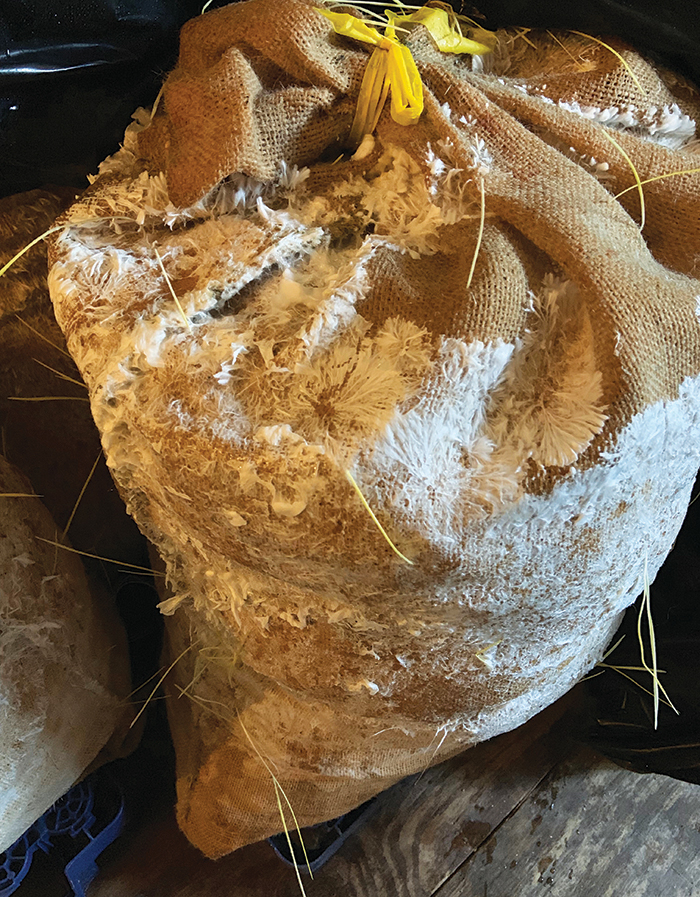
Bunker spawn is bulk spawn made in large scale quantities, and is usually used for bioremediation projects. It is an economical way to produce myceliated straw or wood chips that can in turn be used as filters for agricultural and silty runoff. It also has possible applications for large scale production of substrate to serve as a colonized base, especially in areas where expansion of initial spawn run into beds is unachievable for some reason, usually due to inclement weather or time constraints. Bunker spawn can be made quickly if produced in a climate-controlled building. In our experience at Field & Forest Products, this method works best with Wine Cap (Stropharia rugosa-annulata), and with lesser success, Oysters (Pleurotus spp).
Start with clean straw. In large trash cans, barrels or stock tanks, pack the straw to the top (no chopping of straw is necessary). Straw can be mixed with wood chips, at 50:50 or 4:1 straw to wood chips. The addition of wood chips allows the myceliated mass in the bags to maintain an active net for a little longer, but also makes the bag prone to initial contaminants and poor spawn run. Note: If you are using wood chips, stick to Wine Cap as the inoculum rather than using Oyster mushroom spawn.
• Clean straw, any variety, 3 small square bales
• 1 large bag of sawdust spawn
• Rubber gloves
• 6-10 burlap sacks
• Twine
• 1 large bag of sawdust spawn
• Large plastic sheet (to cover the inoculated bags)
Soak the straw in water for 4-7 days (the cooler the air temp, the longer the soak) or as long as it takes for straw to fully hydrate and preferably begin to ferment (use clean tap or well water if the straw is to be used for growing mushrooms to eat). Weigh the straw down with something heavy to keep it submerged. Watch for a thin film to develop on the water surface which indicates the fermentation process has begun. Letting the straw soak longer is neither necessary nor harmful, but it will get smellier as time passes.
Drain the straw once you observe the film. After draining, pack the wet straw into a burlap sack and layer in handfuls of spawn. Use about 1 lb. of spawn per 30 lbs. of straw (about a burlap sackful). Try to incorporate the spawn as best as you can into the straw as you press it into the sack. The straw is sticky and can be very smelly. This smell will remain on bare hands the rest of the day so be sure to wear rubber gloves! Once packed, loosely close the sacks with twine.
Place the sacks in a warm room (60-75°F). It is helpful to put the bags on a pallet or boards to allow the bottom of the sacks to drain and breath. Tarp the lot with plastic, allowing the plastic to drape loosely on the floor so the bags can breathe but humidity remains high. Check the bunker spawn periodically under the plastic tarp. The surface of the bags may appear dry, but between the sacks should be damp and show mycelium growth. Bunker spawn should be ready in 30 days. The bags will be visibly fully myceliated.
It is possible to use well-prepared bunker spawn to inoculate more bunker spawn. Allow at least 2 ½ months for the final bags to become myceliated.
Bunker spawn can also be made by inoculating and incubating directly in a tank or barrel. Keep the tank tarped under a plastic to hold in moisture. Distribute the myceliated straw in whatever final container or bag you prefer.